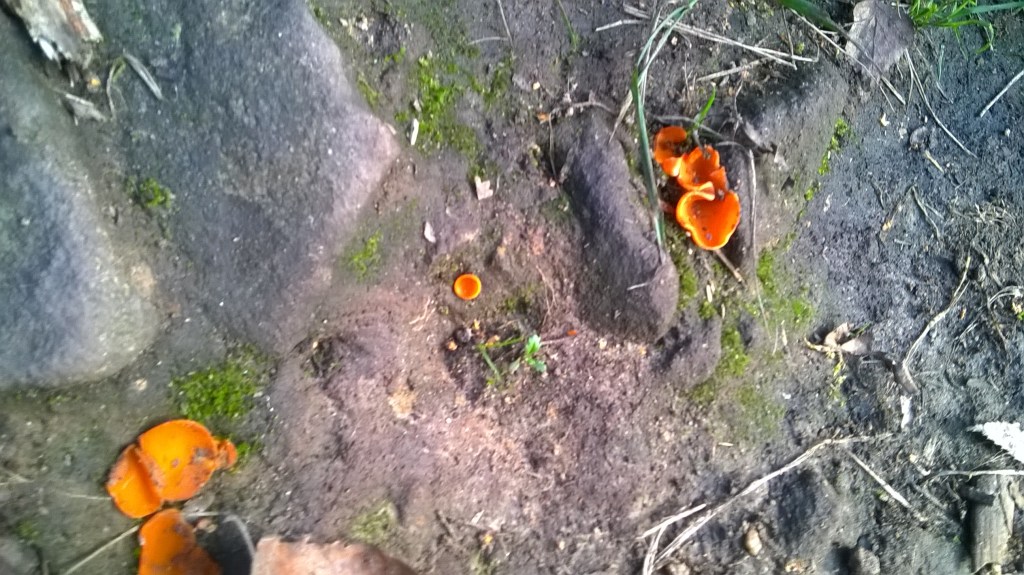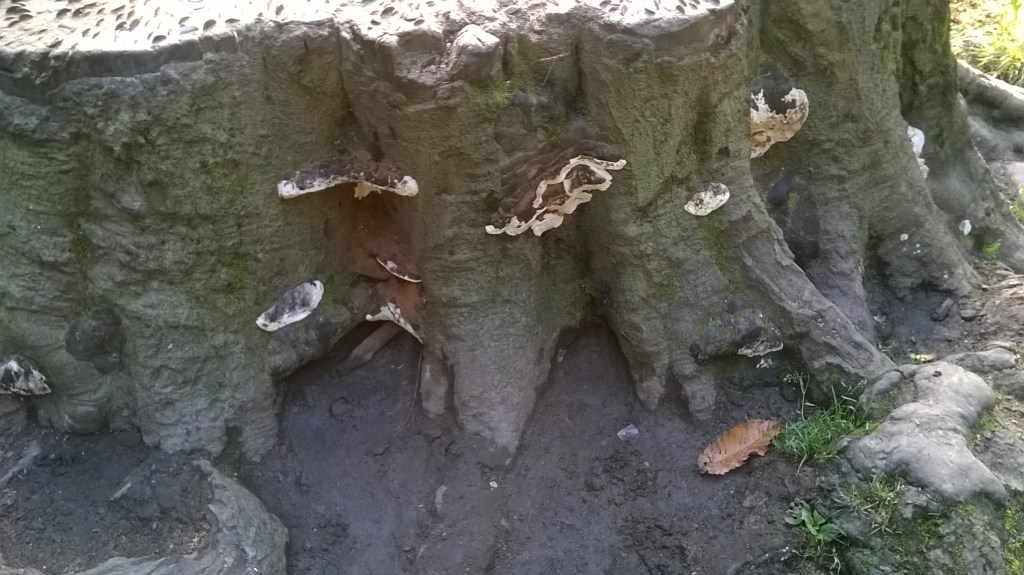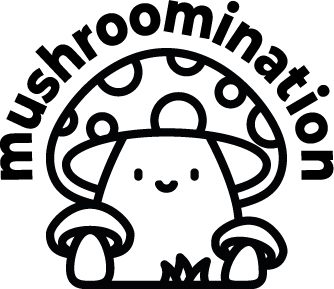
Sometimes, one spends years in the hope of finding a particular species, and many times creeping up to brightly coloured mysteries glinting in the speckled light of the forest only to find that it’s litter. And yet, one day, on a walk with some wonderful colleagues, at the serene, Newmillerdam in West Yorkshire, I tentatively walked up to something, daring to hope and discovered it was, finally, orange peel fungus! Please forgive the quality of the pictures it was 2014 and all I had was my Windows phone on me.
The vivid glowing orange of Aleuria aurantia, of course, gives it its common English name, ‘Orange Peel Fungus’. Thin flesh with an undulating margin, the inner is smooth and the outer is slightly downy. This specimen was by a huge old tree stump.

Orange Peel Fungus emerges typically from autumn to early winter on damp bare soil, ditch banks, and gardens in grass or gravel.
It was initially classified in the Peziza genus, until it was recategorised into Aleuria in 1870. The first record on Cate2, which collects records for across the UK, dates from 1905 and the last at time of writing, was from December in 2021. The records are fairly evenly distributed across England and Wales, less in Scotland but still very common, 1773 in total to date. Keep your eye out for this little gem. Alot of the time, mushroom hunting involves being drawn to random colours that look out of place and being looked at oddly by strangers, but disregard those naysayers as once in a while you will find treasure!

Basic Profile
Scientific name: Aleuria aurantia
Common English names: Orange Peel Fungus
Size of fruiting body: 1-10cm wide
Spores: 17-24 x 9-11 µm
Gills: None, sporulates from the smooth inner surface
Edibility: Apparently edible, with cooking first, caution needed as other cup fungi described as poisonous by First Nature.
Lookalikes: Sarcoscypha austriaca scarlet elfcup – is scarlet and grows on twigs, also has a stem; Peziza species, but they are said to be generally duller shades of orange
On the Red Data List (extinct/critically endangered/endangered/vulnerable/near threatened): No
References:
Cate2 Database, managed and maintained by The Fungus Conservation Trustt
National Biodiversity Data Centre
Red Data List, British Mycological Society
http://iucn.ekoo.se/, The Global Fungal Red List Initiative
Collins Complete Guide to British Mushrooms & Toadstools, Paul Sterry & Barry Hughes, 2009
Mushrooms and Toadstools of Britain and Europe, Edmund Garnweidner, 1994
Mushrooms, Patrick Hardy, 2013
The Encyclopedia of Fungi of Britain and Europe, Michael Jordan, 2004

